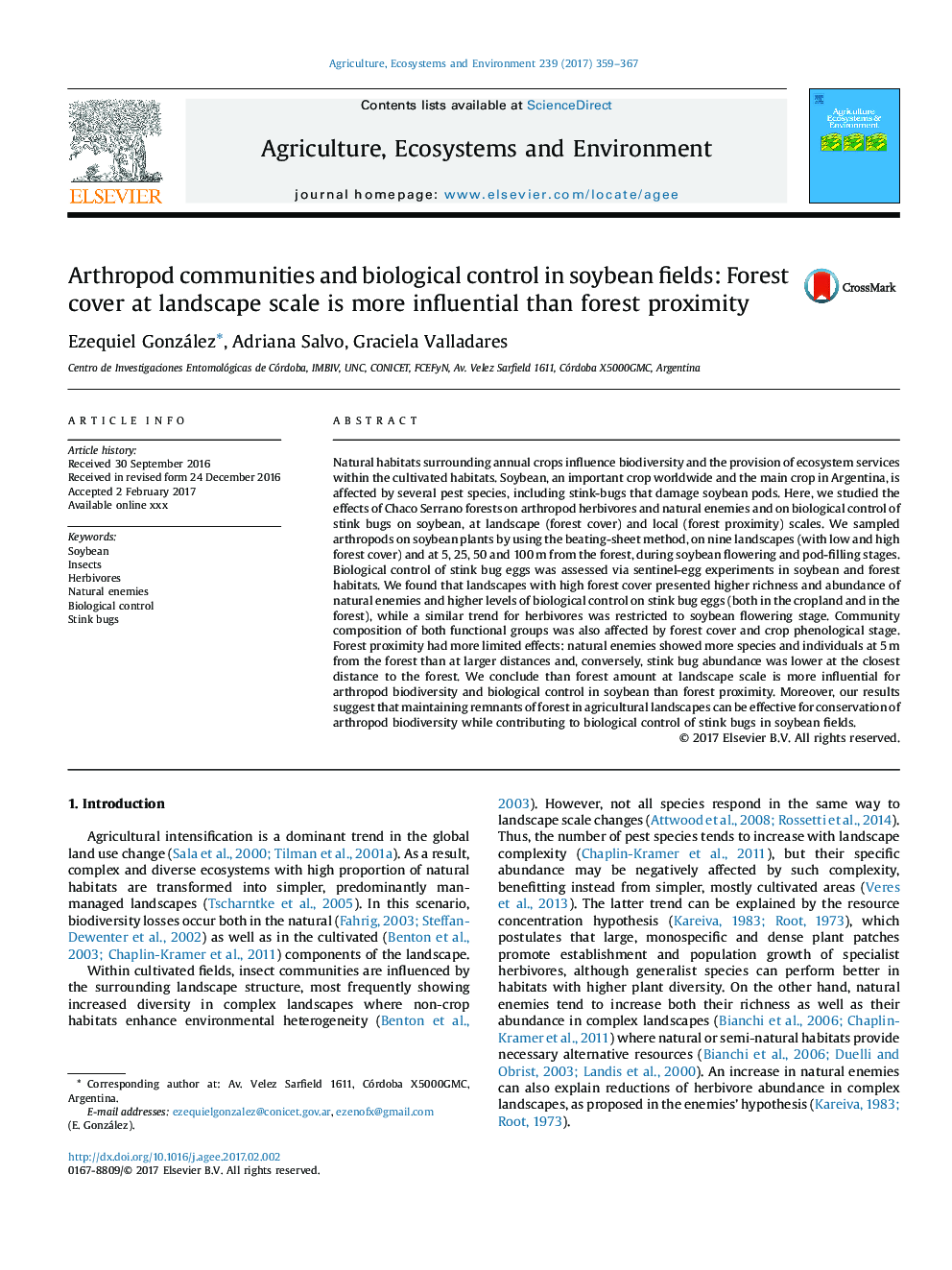| کد مقاله | کد نشریه | سال انتشار | مقاله انگلیسی | نسخه تمام متن |
|---|---|---|---|---|
| 5537943 | 1552013 | 2017 | 9 صفحه PDF | دانلود رایگان |
عنوان انگلیسی مقاله ISI
Arthropod communities and biological control in soybean fields: Forest cover at landscape scale is more influential than forest proximity
ترجمه فارسی عنوان
جوامع شهری و کنترل بیولوژیک در زمینه های سویا: پوشش جنگل در مقیاس چشم انداز بیشتر از مجاورت جنگل تاثیر می گذارد
دانلود مقاله + سفارش ترجمه
دانلود مقاله ISI انگلیسی
رایگان برای ایرانیان
کلمات کلیدی
سویا، حشرات، گیاهخواران، دشمنان طبیعی کنترل بیولوژیک، اشکالات طوفان
موضوعات مرتبط
علوم زیستی و بیوفناوری
علوم کشاورزی و بیولوژیک
علوم زراعت و اصلاح نباتات
چکیده انگلیسی
Natural habitats surrounding annual crops influence biodiversity and the provision of ecosystem services within the cultivated habitats. Soybean, an important crop worldwide and the main crop in Argentina, is affected by several pest species, including stink-bugs that damage soybean pods. Here, we studied the effects of Chaco Serrano forests on arthropod herbivores and natural enemies and on biological control of stink bugs on soybean, at landscape (forest cover) and local (forest proximity) scales. We sampled arthropods on soybean plants by using the beating-sheet method, on nine landscapes (with low and high forest cover) and at 5, 25, 50 and 100Â m from the forest, during soybean flowering and pod-filling stages. Biological control of stink bug eggs was assessed via sentinel-egg experiments in soybean and forest habitats. We found that landscapes with high forest cover presented higher richness and abundance of natural enemies and higher levels of biological control on stink bug eggs (both in the cropland and in the forest), while a similar trend for herbivores was restricted to soybean flowering stage. Community composition of both functional groups was also affected by forest cover and crop phenological stage. Forest proximity had more limited effects: natural enemies showed more species and individuals at 5Â m from the forest than at larger distances and, conversely, stink bug abundance was lower at the closest distance to the forest. We conclude than forest amount at landscape scale is more influential for arthropod biodiversity and biological control in soybean than forest proximity. Moreover, our results suggest that maintaining remnants of forest in agricultural landscapes can be effective for conservation of arthropod biodiversity while contributing to biological control of stink bugs in soybean fields.
ناشر
Database: Elsevier - ScienceDirect (ساینس دایرکت)
Journal: Agriculture, Ecosystems & Environment - Volume 239, 15 February 2017, Pages 359-367
Journal: Agriculture, Ecosystems & Environment - Volume 239, 15 February 2017, Pages 359-367
نویسندگان
Ezequiel González, Adriana Salvo, Graciela Valladares,
